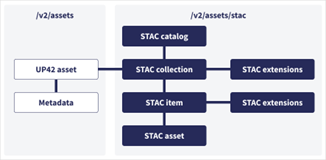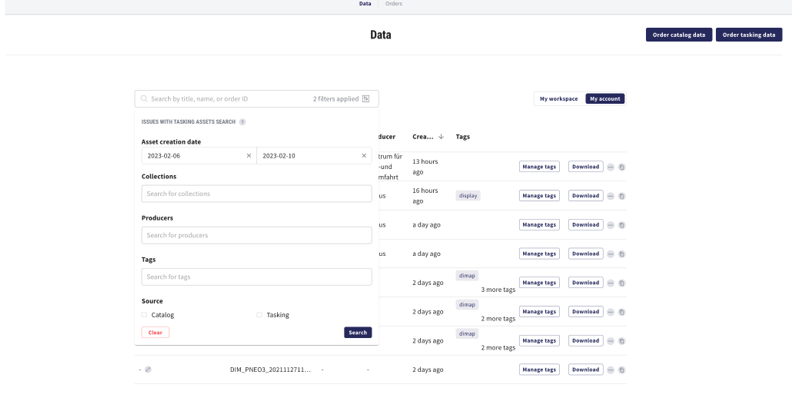UP42 brings STAC to its storage
Over the past few years, the geospatial industry has grown significantly, and with it, the number of image providers and data volume. Most users have probably faced a few data management challenges along the way. Data standardization, or the lack of it, in particular, is often cited as a major barrier to the widespread adoption of geospatial data.
SpatioTemporal Asset Catalog (STAC) is a specification designed to establish a standard in exposing geospatial data and simplify data management for providers, developers, and users. It allows searching across multiple providers for geospatial assets which share a common structure and set of metadata. UP42 has further strengthened its commitment to the STAC standard by integrating STAC in UP42 storage and ensuring a common metadata format across providers.
STAC might seem like another data standard at first. It is not. First introduced in 2021, it has improved and grown in popularity significantly. Many of the biggest providers of remote sensing and spatiotemporal data use the STAC specification. STAC has a well-designed, standard format, it is user-centric, as well as searchable, crawlable, and indexable. STAC allows users to easily search for, acquire, and analyze geospatial data from multiple providers and sources. This is extremely important because a lack of standardization often leads to low availability of plug-and-play integrations. STAC enables a strong foundation for exploring data from different providers, as well as for building a robust backend, downstream integrations, web portals, visualization, and more.
UP42 provides a STAC API endpoint for data searches in UP42 storage. The assets in storage can be data from catalog or tasking orders. This ensures a consistent metadata format across all providers, and with standardized metadata, customƒfers can more easily integrate data into their pipelines. For example, if someone places a tasking order, they will automatically get the respective metadata for the tasked assets in the API shortly after the raw asset is delivered to storage, so theƒy can immediately work with it.
STAC is organized into the following structure.

- STAC catalog is a top-level object that provides a linking structure for grouping other STAC objects.
- STAC collection is a UP42 asset resulting from a completed tasking or catalog order. It groups related items and aggregates their summary metadata. It contains STAC items.
- STAC item is an individual scene in a STAC collection with a unique spatiotemporal extent, such as tiled images, images with different acquisition times, stereo pairs, or tri-stereo triples with different angles and acquisition times. Different spatiotemporal extents produce different STAC items. A STAC item contains STAC assets.
- STAC asset is a geospatial feature of a STAC item, its quicklook, or metadata file. For example, multispectral and panchromatic products of an image acquired by an optical sensor are different STAC assets.
- STAC extension is a JSON schema with additional parameters available for a specific STAC object. Extensions differ based on data availability, sensor, and constellation.
More information is available in our technical documentation.
In addition to introducing STAC and enabling STAC-compatible endpoints for all geospatial assets, UP42 has introduced a new set of functionalities to UP42 storage. Users can now reflect their internal asset structure by customizing assets with their own titles and tags. They can also search for a specific asset property (e.g., order ID, title, or asset name) or create a consolidated view of their assets through sort and filter operations for collection, producer, tags, title, and source (catalog or tasking orders) - on the workspace and account level.

We will continue to play a key role in supporting our partners and customers on their journey with STAC. We will also continue our commitment to implementing more cloud-native geospatial data formats such as standardized COGs, exposed through STAC, enabling streaming capabilities and access to subelements of UP42 assets, as well as unifying file format and directory structure. Expect more updates from us soon.
Download the PDF version:
